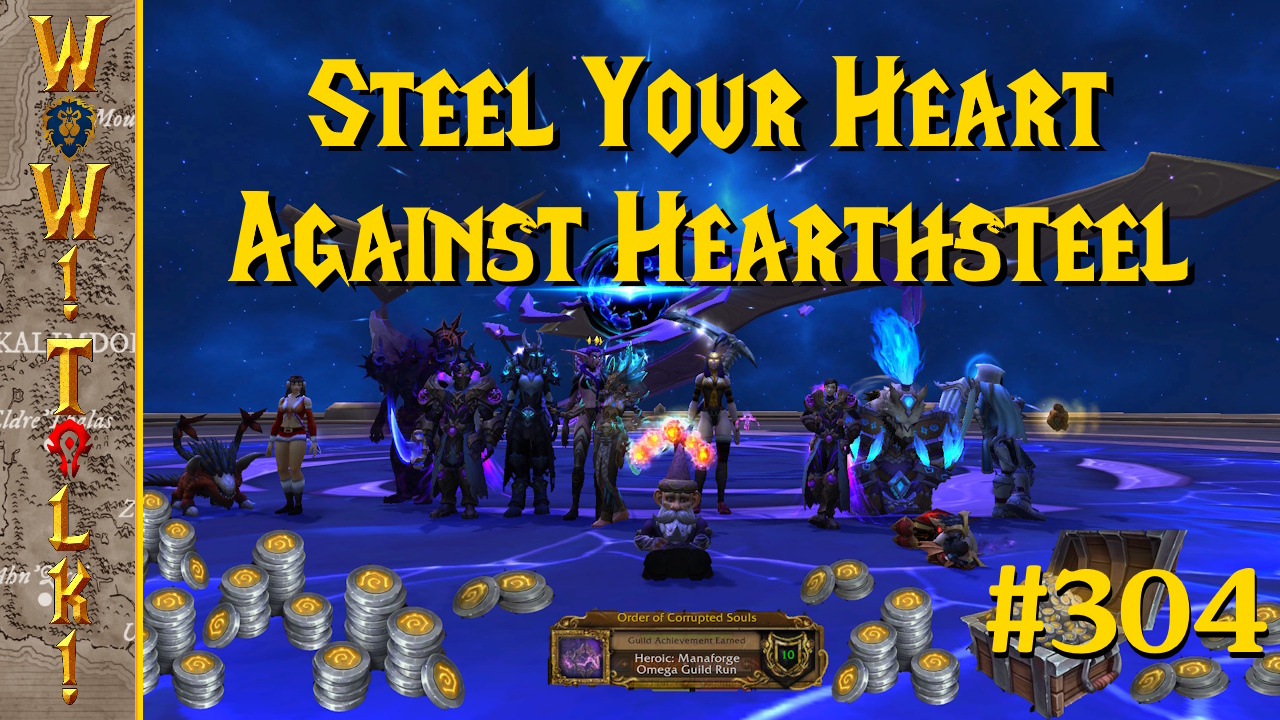
“Oh…it’s you.” She said as she loomed over me. In that moment, in a warped and twisted way, I knew I was home. GLaDOS’ resurrection most certainly isn’t where Portal 2 starts, or even where the familiarity sets in. But it is definitely when you know the game of cat and mouse is about to begin anew. Valve’s sequel to the 2007 hit game Portal doesn’t take the formula that you knew and just add more puzzles to it though; far from it. Things start off recognizably once you start into the puzzles, of course. But by the time you reach the second (and third) arc of the game, the situation (and by extension your understanding of it) has changed drastically. I’m going to make a note here, so as to get the pun out of the way: Portal 2 is a huge success.
The game starts simply, with you (as Chell) being trapped once again at Aperture Labs. “How in the world did I get back here?” Some of you might be wondering, and this is a fair question if you are a console player or haven’t played the original Portal within the last year or so. Or you might have had your head stuck in a hole. Whatever the reason for your confusion, what happened is that Valve adjusted the ending on the PC, just prior to announcing Portal 2. In this adjusted ending, you still defeat GLaDOS and end up in the Aperture parking lot above ground. There, incapacitated on the ground, you are thanked by an unseen and unknown entity for assuming the ‘Party Escort Submission Position’ and drags you back to the lab. GLaDOS herself makes mention of this position near the game’s closing (in both versions of the original game), as she tries to entice you with a party and cake.

There used to be an embeded media player here, but it doesn't work anymore. We blame the Tumbeasts.
It is sometime after this that you wake up from stasis. No longer are you stuck in a glass cage like the beginning of Portal. Aperture instead has set you up in the post niceties… of something akin to a sleazy motel room. Here you go through the game standard movement and look calibrations (default mapped to the left and right analogs on console, and mouse and keyboard on PC) with some quirks that are Portal’s unique brand of funny. You are put back into stasis again, only to wake up an unspecified amount of time later to find things are even less right than when you started. Your hotel room is in shambles and covered in grime and dust, and you’ve been in bed so long that a contour of your body is sunk a foot into the bed. This is where you meet the personality core Wheatley, one of the new characters in Portal 2, for the first time.
He introduces himself as the caretaker of all the test subjects (you weren’t the only one stuck there, it seems). Or at least he used to be the caretaker, before everything went terribly wrong and everyone except you died in stasis. Oops. So Wheatley decides he’s going to break the both of you out of the lab, but to do that you’re going to need something he can’t get. You guessed it: a portal gun. It’s after your escape from your hotel room pod that the old familiar Portal emerges. A bit dirtier and worse for wear, but recognizable. You actually start out with the first few puzzles from the original game, solving the simple puzzles that allow new players to begin gaining an understanding of ‘thinking with portals’, and letting veterans of the series get back into the swing of things.

Being a returning Portal player, the opening was paced well enough that I felt like my mind was being given a chance to stretch, but not so long I became bored with it. As with so many parts of the game, Valve manages to ride that fine line between frustration and fun with finesse. And so, after a little reintroduction and a few terrible decisions by a personality core that will remain nameless, you not only do not escape the facility, you also revive GLaDOS in the process. And she’s pretty upset, because you killed her. You monster.
But don’t fret, because there’s science to be done, and you’re about the only one left to do it. And GLaDOS can be the bigger ‘person’ for science. Although as you quickly discover once you’re back on the testing track, she is going to be the bigger person only so much. How civil would you be with someone who killed you, after all? (The correct answer, by the by, is that you wouldn’t be civil at all. Because you’d be dead.) So GLaDOS doesn’t waste much time with the thinly veiled threats, and she has quite a few barbs to throw at you about subjects old and new. She’s certainly not going to let you forget you’re adopted and oh, she thinks you’ve put on a few pounds. Every line is delivered perfectly by Ellen McLain, who reprises her role as GLaDOS, going from helpful assistance to passive-aggressive menace in a heartbeat, and it’s just as funny as ever.
As I worked my way through the puzzles that were growing gradually move complex and laughing at GLaDOS’ smouldering hatred of me, I realized something deviously clever Valve had pulled off. It wasn’t simply that the dialogue that they had written was funny, although it certainly is. It’s that Valve puts you in life-or-death situations where the stakes are constantly rising as the puzzles get more deadly; then they magically manage to make you forget how deadly serious things have actually gotten with well-timed comedy. Even when the comedy is you being threatened in those life-or-death situations. It’s absurd how well it works, really, but Valve does it consistently throughout each arc of the game.

I keep referring to ‘arcs’ in the game which technically don’t exist, but are how I’ve come to recognize the game’s layout. There are actually nine chapters in the game, but I see it broken into three story arcs. The first arc finds you dealing with the devil you already know, only to have that adversary replaced by the devil you don’t. The third arc is your return to take care of things once and for all with that new antagonist. The second arc actually takes you on a bit of a detour as you get a look at the history behind Aperture, along with a completely unexpected background of a character you think you know. It’s also where you’re introduced, by old recordings, to Aperture’s founder and CEO, Cave Johnson. As per the norm in Portal, Cave is… a unique individual, possessed of some equally unique ideas about science.
His unique views on science present themselves as puzzle elements in the form of three gels: propulsion gel (which makes you move really fast), repulsion gel (it makes you bounce!), and conversion gel (it makes portal surfaces on anything). Much like the other puzzle elements (weighted storage cubes, buttons, lasers, turrets, momentum) that are used again in Portal 2, the game does a good job with gradually introducing the gameplay changes that come with each gel, and then using them to force you to bend your mind in new ways. Eventually you come to the point where you’re using the repulsion, propulsion, and conversion gels together, and it’s almost second nature by the time it happens.
As you ascend through the different iterations of Aperture Laboratory (and do a bit of pseudo time-traveling as a consequence) attempting to make your way to the surface by solving the gel puzzles, you’re presented with the timeline of an eccentric science maverick who grows increasingly desperate through the years. At first it starts as a determination to prove himself, then shifts to a desperation to remain relevant, and then the ultimate desperation: to stay alive. In these last speeches you are given the framework for why Aperture Labs is the way that it is. Valve also uses the speeches to set you up for something entirely unexpected: pity, and a melancholy look at mortality.
Then they go a step further with Cave Johnson’s final recording, and in a move that is pure genius, turn everything on its head and make you laugh despite yourself. As amazing as Stephen Merchant was as Wheatley, that single last speech on its own set J.K. Simmons’ performance of Cave Johnson as my hands-down favorite character in either Portal. That says something about the beautiful inversion Portal 2 pulls off, and just when things are emotionally at their darkest. It’s with that laugh in your gut, and a little fire in your veins, that you head back to the surface and into the third arc to tie up loose ends.

To say the third arc is where Portal 2 shines would paint a false picture; Portal 2 shines everywhere. But the third arc is a culmination of all the puzzles you’ve solved and all the elements contained in them. It puts you in a position to conquer puzzles that look impossible when you first walk into a room. One sentence conversations with myself consisting of, “You want me to get where?” were not uncommon, and perhaps explain my want to value the nurtured guidance that becomes fully realized in that last stage. Because Portal 2 does so many things well, but at the end of the day it is a puzzle game first and foremost. The fact that they manage to gracefully juggle the balance between puzzles being too easy and thus having no payoff, and puzzles being too hard and leaving me annoyed is special. You certainly have to work at all but the most basic puzzles, but you always feel accomplished at the end of a particularly clever test.
It may seem I’ve explained too much of Portal 2’s story, but believe me, I only scratched the surface in order to give you an idea of what you’re in for. There are twists and turns, and plenty of unexpected hilarity, all around. I will refrain from saying much more about the last arc of the game, but it is a satisfying build up to a fantastic last encounter. It’s also followed by the greatest ending and credit sequence in gaming. After hearing the complaints and witnessing the blow-back on Metacritic about Portal 2’s alleged four hour length in single player, I expected a good game, but a woefully short one. I was never so glad to be proven wrong. Portal 2 is excellent, and while it isn’t a 25 hour game, its well-crafted single player will eat about 8 hours of your time. It is a game that stresses quality over quantity, and I will gladly take the quality Valve gave rather than a game that could have been drawn out for no real reason.
I would have footed the bill for Portal 2 even if it had only been singleplayer; it was just that good. Fortunately, Valve didn’t just stop with a great one player experience and added cooperative play into the mix this time around. Multiplayer, much like the rest of Portal 2, was well thought out and implemented. Not just a feature to tick off on a list, multiplayer actually carries over from the story of singleplayer, and brings a story of its own to form a cohesive experience from one mode to the other. It’s by no means required to play through the solo game to take part in co-op, but I felt the extra perspective in story was worthwhile. More importantly, you’re given a lot more tools from solving the solo puzzles that you can bring into the multiplayer side, which becomes a tremendous help. Valve does well recreating the slow-guidance-up-to-ridiculous-puzzle-solving that they crafted in singleplayer, but two players makes things more complicated even faster.

You and a partner take on the roles of Atlas and P-body, two cooperative testing units (repurposed from a personality sphere and a turret, respectively) who are easy to associate with classic pairs like Laurel and Hardy, or in more robotic fashion, R2-D2 and C-3PO. GLaDOS is your overseer, and is also used to reinforce the connection between single player and multiplayer. But don’t think that her malice is gone because you aren’t a human tester. GLaDOS has a bit of latent hostility to work out, doesn’t take well to imperfection, and you two are the only units around. As you can guess the situations get pretty hilarious, and eventually develop into a second story you get to experience with a friend.
Multiplayer doesn’t change much in controls from the solo mode. You still have jump, look, move, dual portals, and an action button to use (mapped differently depending on your platform of choice. The controls are changeable in either mode though.) but multiplayer sees some extras added. Some are born out of necessity like the ping tool that shows a partner exactly where you’d like them to go or place a portal, or the handy timer that helps avoid those awkward discussions about, “When, exactly, would you like me to go?” Other control additions are pure fun, such as the suite of emotes you’re gradually given access to over the course of playing. These range anywhere from high fives and hugs and games of rock-paper-scissors, to solo emotions like waving and laughing. The simple interaction between players during puzzles becomes a thrill as well, when you start doing things that simply wouldn’t be possible going at it alone. After creating a high-speed drop with two portals, then launching my fiance out of a different floor by repositioning one of them – all so she could hit a button – we laughed for about 5 minutes afterward. I had basically shot her her out of a cannon. With science. And it was glorious.
Eventually the puzzles incorporate all the elements that were present in single player (including the gels) and surpass the singleplayer puzzles altogether in sophistication because of the necessity for two players to complete them. Many games have multiplayer or co-op in name only Sure, you can choose to work together, but at any point one person can carry their team on their backs or complete the mission Rambo-style. Not so in Portal 2; you either conquer puzzles together, or not at all. This goes beyond simply forcing you both to reach a checkpoint together. Instead, Portal 2 fosters a genuine spirit of cooperation through the interaction between you and your partner. It starts slowly as you hold down buttons for your buddy and hand each other weighted storage cubes, but eventually you’re flinging each other through space and aiming lasers near one another.

When you get to the point of putting your robotic life into your partner’s hands, there is the potential for mischief. After all…accidents happen. But while an ‘accidental’ death may occur, they aren’t a serious setback. In fact Valve made sure that death isn’t something to fear in co-op, and in fact is good for a laugh. There is certainly the potential for griefers online (and in your house, for that matter), but it’s easy to jump out of a game and into one with a partner who’s interested in actually solving puzzles. Besides that, it’s always more rewarding to reach the end of a puzzle and share a high-five with your buddy.
The co-op mode clocks in at about six hours for an average pair of players, rounding out the Portal 2 experience very nicely. As Cave Johnson says, “I punch those numbers into my calculator, and it makes a happy face.” Portal 2 is an excellent game without overstaying its welcome, and by placing substance over filler comes out light years ahead of anything else I’ve played recently. It does the unexpected with eager delight, and everything you do expect better than you hoped. Not only is Portal 2 a great purchase and a great game at this moment in time, but it also makes me pretty damn sure I’ve just played the Game of the Year. It’s safe to say I’m recommending that you play this game. Right now. Seriously, why are you even still reading this?




